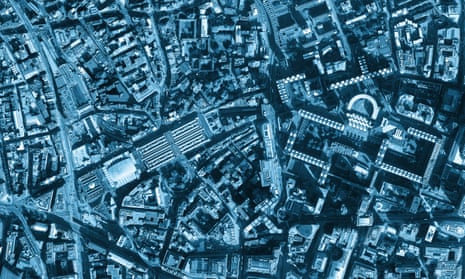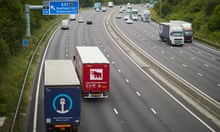The UK’s official statistics office is looking into using traffic sensors, mobile photo data and satellite images as new ways of measuring the shape of the economy.
The Office for National Statistics (ONS) is opening a new data science campus at its headquarters in Newport, south Wales, on Monday as part of a £17m investment in the way the UK collects and presents data.
It will explore new ways of measuring the economy, including using traffic sensors to gauge activity, mobile phone data to track commuter patterns and satellite images to estimate populations.
The ONS is under pressure to present more timely and broader insights into the economy following criticism that official statistics fail to capture the full picture of the modern lifestyle in Britain.
A government-ordered review by the former Bank of England deputy governor Sir Charlie Bean last year called for the ONS to be more innovative and for economic statistics to be modernised.
Number-crunchers at the new ONS hub have been tasked with harvesting information from the growing collection of big data that has been created by new technology and the internet.
Tom Smith, managing director of the new campus, said: “There is a recognition at ONS that there is a real opportunity and a real need to step up our game in terms of the way we use those data sources and the techniques and the capacity that we have across ONS and across government.
“I want to take some of that expertise that is used to sell advertising in the commercial space and use that to understand the world for public and social good.”
The ONS will work with universities, governments, charities and businesses on developing its use of data.
At the opening on Monday, data scientists and apprentices at the new campus will hear from the non-profit foundation Flowminder about how it uses satellite images and mobile phone data to map populations and track migration.
Smith said the ONS could also use “street level data”, such as the images on Google Street View, to track economic activity.
“For example, can we say from the imagery that we have what this neighbourhood might look like in terms of deprivation levels, poverty levels, what businesses and economic growth is happening there. That brings in again a very different data source,” he said ahead of the launch.
The ONS will not look at individual data from mobile phones, Smith added, but aggregated data from a collection of devices could be a useful source of information on the economy.
“Mobile phone ownership and use during the day can tell you something about where people are moving to, so home-to-office migration patterns,” he said.
“But also the amount the phone is used gives you something around economic usage indicators.”
Another international partner presenting to the ONS on Monday is its counterpart in the Netherlands.
Statistics Netherlands will explain how it has used data from about 60,000 road sensors around the country.
“They give you a minute-by-minute readout of the amount of traffic passing and they are using that as an indicator of what’s happening in terms of patterns of economic activity,” Smith said.










